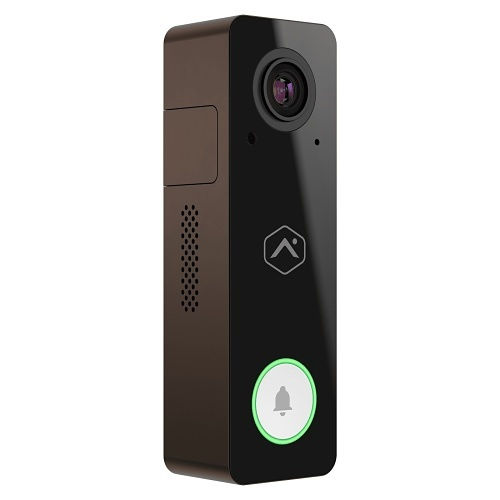
Users of the Alarm.com website and mobile app may check the status of their thermostat right now. The UI shows the ambient temperature, heat setpoint, cool setpoint, humidity, and current temperature mode when supported by the device. Users can alter the temperature mode, update the device setpoints, or activate the fan.
Thermostat Integration Requirements
Sequence ID
Payloads for thermostat states must have a Sequence ID. Thermostats cause a lot of device state changes, but sequence IDs make sure that events are handled properly and that Alarm.com UIs appropriately depict the device. This value must appear in both Report State events and Query answers.
Ambient Temperature Changes
On the user interface, Alarm.com shows the outside temperature as a single figure. Ambient temperature changes should only be reported via Report State if there has been at least a full degree Fahrenheit change or a half degree Celsius change in ambient temperature. This is to prevent a high volume of incoming communication.
Thermostat Integration FAQs
How does Alarm.com interpret and present temperature readings?
To the closest hundredth degree, the incoming temperature measurements are translated to Fahrenheit and then saved. UIs will display entire figures for F (midpoint away rounding) and half degrees for C depending on the user's selected units.
What distinguishes the Google Home API from the thermostat API offered by Alarm.com?
Alarm.com supports an “emergencyheat” thermostat mode.
The alarmDotComAvailableFanModes field.
The alarmDotComThermostatTemperature* state fields.
The alarmDotComThermostatFanMode state field.
The alarmDotComSequenceId state field.
The thermostatTemperatureSetpoint command field is not used. Setpoint values will always be sent using thermostatTemperatureSetpointHigh and thermostatTemperatureSetpointLow.
How can Alarm.com users programme their thermostat's setpoints?
Users will only be able to change the thermostat's low setpoint when it is in heat mode (thermostatTemperatureSetpointLow). Users can only change the gadget's high setpoint when the device is in cool mode (thermostatTemperatureSetpointHigh).
Alarm.com will automatically update the other setpoint until it is beyond the buffer range if the user modifies a high or low setpoint to a value that is inside the other setpoint's bufferRangeCelsius.
Users can select the temperature at which the thermostat warms up and cools down when it is in the heat-cool mode (thermostatTemperatureSetpointLow) (thermostatTemperatureSetpointHigh).
Users won't be able to alter the thermostat's setpoints while it is in off mode.
If a setpoint for action.devices.commands is given. What do you anticipate will happen when ThermostatTemperatureSetRange exceeds the thermostat's temperature threshold ranges?
An error code string in the response body should be returned in response to any instructions that include arguments that go against the thermostat's setup. The error message in this situation would be "valueOutOfRange." For detailed formatting, see the section on Execute request errors.
























